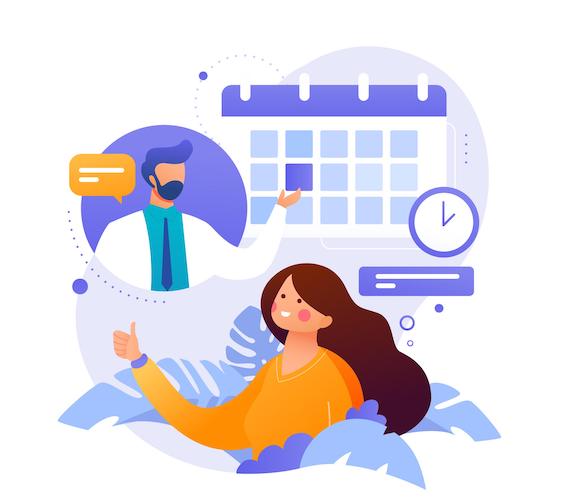According to the American College of Physician Executives, patient non-attendance rates can soar up to 20%.
Managing no-shows is crucial for providers, and digital solutions come to the rescue. With automated appointment reminders and online check-in systems, patients and providers can streamline the medical scheduling process. Studies have shown that automated appointment reminders can reduce no-show appointments by up to 60%.
Join us as we explore the power of these and other digital solutions in reducing no-show appointments and uncover strategies for enhancing outpatient clinic efficiency. Let’s get started!
Top Takeaways:
- Among the strategies to reduce no-show rates in outpatient clinics, implementing a comprehensive patient engagement platform stands out as the most crucial for healthcare providers. It streamlines appointment scheduling, uses gamification for motivation, tracks customer behavior, and allows for continuous improvement, ultimately reducing no-shows and enhancing the overall healthcare experience.
- Implementing user-friendly technology for all customers, including less tech-savvy individuals, can improve appointment attendance. This approach includes simple rescheduling methods, automated reminders, digital check-ins and payments, and intelligent scheduling applications to reduce wait times.
- To improve patient attendance and decrease no-shows, healthcare providers can adopt several advanced practices. These include offering visual timetables, enabling voice input for simpler appointment-making, and tracking a patient’s location to proactively manage late or absent customers.
Table of Contents:
What are the Reasons for Patient No-Shows
The Impact of Patient No-Shows
Strategies and Interventions to Reduce Patient No-Shows
Steps to Implement a Patient Engagement Program
- Step 1: Identify and Define Goals
- Step 2: Gather Data to Understand Patient Needs
- Step 3:Develop an AI-Driven Scheduling System
- Step 4: Utilize Gamification Techniques
- Step 5: Implement a CRM System
- Step 6: Track Program Performance
- Step 7: Evaluate Program Effectiveness
Case Studies of Successful Strategies
Best Practices for Improving Patient Attendance
How Topflight Can Help Decrease No-Show Appointments
What are the Reasons for Patient No-Shows?
Patient no-shows, a pressing issue that healthcare providers are constantly dealing with, can be attributed to a variety of causes. These include:
- poor communication between involved parties
- lack of understanding about appointment times or procedures
- financial constraints
- transportation issues
- forgetfulness or lack of motivation
Understanding these factors is pivotal in addressing and finding effective strategies to deal with no-shows.
From a technology standpoint, we can attribute no-shows to:
- lack of digital channels of communication between customers and providers
- inefficient digital solutions (lots of unoptimized, disparate systems)
- insufficient digital literacy skills among patients
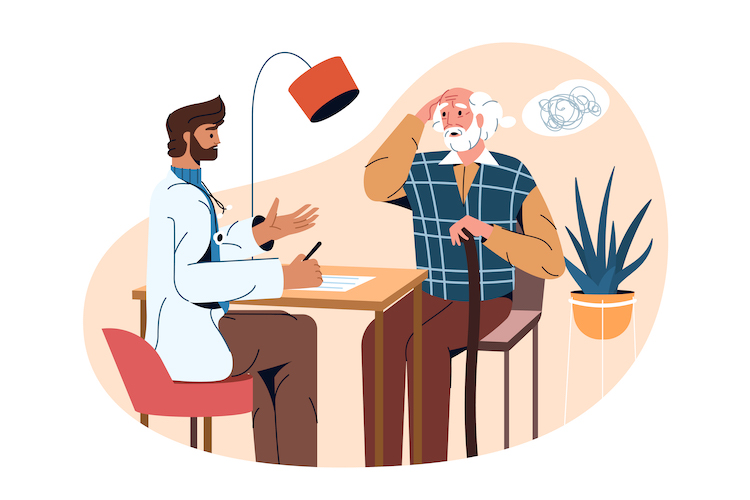
An effective digital strategy can become crucial in cutting down no-shows and implementing measures for reducing non-attendance in future health care.
The Impact of Patient No-Shows
Patient no-shows significantly impact healthcare providers, leading to lost revenue, decreased efficiency, and strained staff resources. This issue underscores the importance of finding effective strategies to decrease no-shows and align with value-based healthcare trends.
Missed appointments create a ripple effect: lost revenue from unfilled slots, increased wait times for punctual customers, wasted resources due to unused appointment slots, and inevitable delays in care and treatment.
Furthermore, it can compel clinics to overbook appointments, resulting in reduced efficiency as staff juggles multiple customers simultaneously.
Lost revenue due to broken appointments
When a patient does not attend their medical office appointment, the provider has to find another customer or reschedule the meeting. This negligence leads to lost revenue as providers are unable to fill that empty slot with a new patient or an additional appointment.
Increased wait times for patients who do show up
A customer’s failure to attend their appointment inevitably leads to longer wait times for those who do show up. Consequently, this can create frustration among patients, especially in pediatrics, where maintaining a schedule is crucial, diminishing their satisfaction with the quality of care.
Wasted resources from unused appointment slots
Providers must deal with unused time slots if a patient misses their appointment, resulting in wasted resources when they can’t utilize them for other customers or additional consultations.
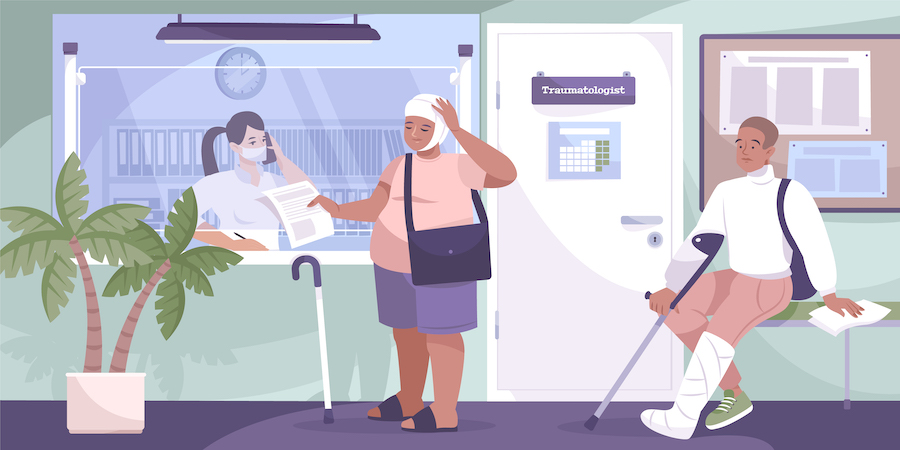
Delays in care and treatment
If patients fail to show up, their care and treatment will inevitably be delayed. This could lead to poorer health outcomes as they cannot receive timely care.
Reduced efficiency due to overbooking of appointments
In an effort to fill any empty slots created by no-shows or broken appointments, many providers choose to overbook patient appointments. This results in decreased efficiency in the medical office as staff cannot effectively manage their time and resources with multiple customers present at one time.
In the long run, missed doctor’s appointments could tarnish provider reputations if they’re perceived as unreliable or unprofessional. Therefore, healthcare providers must take measures to avoid no-show appointments.
Strategies and Interventions to Reduce Patient No-Shows
A comprehensive digital solution that integrates customer needs can be a significant intervention to reduce patient no-shows, especially among low-income patients who may face additional barriers.
Such a solution should include tools and features that make it easier for customers to book and track appointments, as well as reminders for the prevention of no-shows.
Here are a few of the best no-show-reducing strategies to get you started.
Automated appointment reminders
Automated appointment reminders are a powerful tool to decrease no-show appointments. By sending timely personalized notifications about upcoming appointments via text message, email, instant messenger, or automated phone calls, patients stay informed about their consultations and are more likely to attend.
Flexible scheduling
Providing more flexible scheduling options can help reduce patient no-shows. Clinics may try offering different appointment times and same-day or next-day appointments. This boosts convenience for customers who cannot make a regular appointment time and helps promote a higher attendance rate.
Use patients’ preferred way of communicating
By reverting to patients’ preferred way of communicating and offering multi-channel reminders that work on different platforms (web, mobile, desktop), healthcare providers can further reduce no-shows and cancellations. Such flexibility is vital for low-income patients with limited access to certain communication channels.
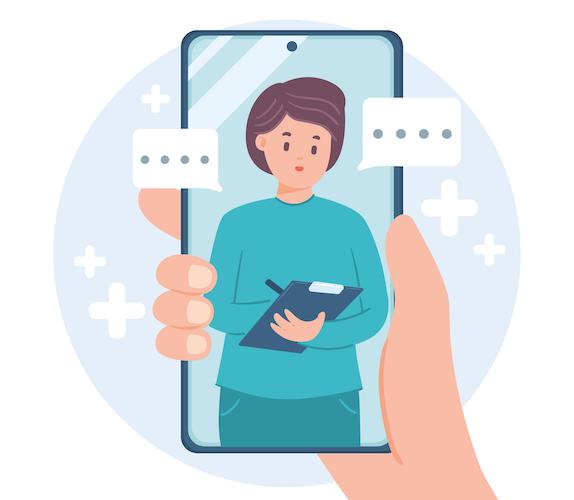
Patients can be reminded of upcoming appointments through text, email, or push notifications in a mobile app or a web patient portal. As a result, the customer stays aware of the meeting and can make necessary arrangements to attend. Additionally, reminders can be tailored to the user’s preferences, making it easier to receive and process the information.
Reaching out to less tech-savvy patients
Reaching out to less tech-savvy patients is essential in lowering the number of patients who miss appointments. Sending reminders as a simple text message or an automated call ensures that even those uncomfortable with modern technology will receive the notification. This inclusive approach further helps decrease no-show appointments at the physician’s office.
Allow simple rescheduling
Healthcare providers can make it easier for patients to reschedule appointments by allowing them to do so via an app or text message. Customers can easily adjust their appointment times according to their needs without calling the physician’s office or visiting in person, making it a convenient option.
To make this process smoother, healthcare providers can use an AI platform to parse patients’ messages and automatically reschedule the appointment, sending an appointment confirmation message to the customer once the process is complete.
Automate digital check-in and payments
Providers can simplify the appointment process for their patients by automating digital check-in and payments. By allowing customers to submit all required paperwork and make payments online before their appointment, providers can reduce the amount of time spent in the doctor’s office and enable a seamless transition between the digital and physical spaces.
By streamlining the appointment process, patients can focus on their healthcare needs without worrying about completing paperwork or making payments, ensuring a hassle-free experience.
Reducing wait time with smart scheduling
Healthcare providers can improve the speed and efficiency of the appointment scheduling process and, importantly, decrease no-show rates by utilizing an intelligent scheduling application. This application can automatically handle rescheduling and filling last-minute canceled appointments without human intervention.
As a result, the wait time between patient scheduling and appointments can be significantly reduced, providing an improved experience for patients and healthcare providers while effectively decreasing no-show occurrences.
Explaining the importance of visits and the no-show policy
It is vital for patients to understand the importance of each of their appointments and to take the time to attend them. To help facilitate this, healthcare providers can offer educational resources and materials to customers that explain the value of preventive care and regular visits and the consequences outlined in the no-show policy.
This will help ensure patients are adequately informed and motivated to prioritize their healthcare needs.
Finding the best cadence for reminders
A powerful reminder system is crucial for ensuring patients remember their appointments and don’t simply forget, violating the appointment policy. This system should include automated follow-ups and notifications to patients the day before their visit and on the day of their visit.
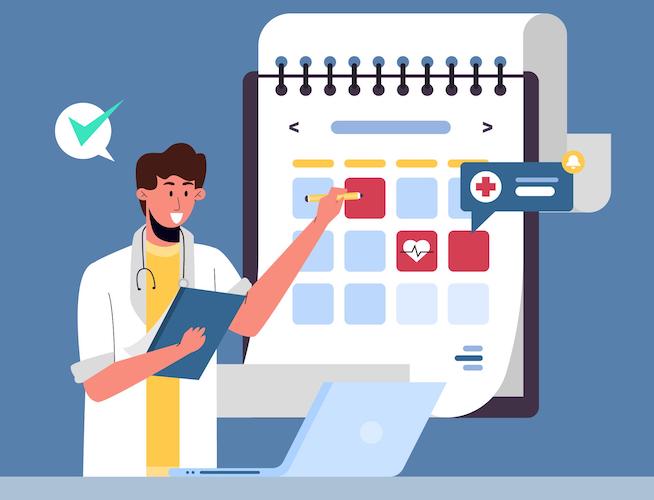
Of course, reminders should be highly personal and include info about the dietary restrictions or any other preparations required for the visit to help clinics and practices handle no-show appointments effectively.
Leveraging technology for more advanced reminders
Patients familiar with technology should have access to more sophisticated reminder systems that take into account their present location and send notifications that factor in travel time. The use of location-aware tech guarantees that patients receive timely reminders about their appointments, enabling them to plan their transportation and manage their schedules more efficiently.
As a result, this helps to reduce the rate of missed appointments, thereby playing a significant role in ways to reduce no-show rates in outpatient clinics.
Making use of gamification for improved attendance
Healthcare providers can leverage gamification to thank and reward patients that arrive at their appointments on time by providing rewards such as:
- points
- discounts
- free products that can be used at a later date
This feature will encourage patients to take their appointments seriously and show up on time, thereby improving the overall experience for both patients (including chronic no-show patients) and healthcare providers and further contributing to ways to avoid no-shows.
Logging appointments and no-shows in a CRM
Healthcare providers can leverage a customer relationship management (CRM) system to accurately log all patient appointment shows and no-shows. This data can power an AI-enabled scheduling and reminder system, allowing for more personalized and targeted reminders.
A reminder engine running on ML algorithms will help reduce missed appointments, as customers will receive reminders tailored to their specific needs and interests. This data can also help gain insights into patient behavior and preferences, allowing providers to improve the overall patient journey.
Steps to Implement a Patient Engagement Program
As you probably realize, eliminating missed doctor’s appointments involves creating a specialized patient engagement platform. Eventually, the platform will combine all patient engagement strategies discussed in the previous section as a comprehensive digital solution integrated with EHR/EMR systems.
Healthcare providers should consider implementing several steps to ensure their platform is effective and there’s no mess with countless reminders going out from disjointed systems.
By following these steps, healthcare providers can create a platform that helps reduce missed appointments and improve the patient experience. Here’s a quick overview of how you can implement a patient engagement platform:
| Step | Description | Key Actions |
|---|---|---|
| Step 1: Identify and Define Goals | Set measurable goals to improve patient engagement and reduce no-show rates. | Define specific metrics (e.g., show rates, no-show rates), and use data to adjust strategies for measurable impact. |
| Step 2: Gather Data to Understand Patient Needs | Collect data on patient demographics, health history, and reminder preferences. | Use the data to tailor engagement strategies to patient needs, such as preferred communication channels (e.g., text, email). |
| Step 3: Develop an AI-Driven Scheduling System | Build a scheduling system with AI to send personalized reminders and adjust over time. | Leverage AI to tailor reminders to patient preferences and behavior, improving engagement and reducing missed appointments. |
| Step 4: Utilize Gamification Techniques | Incorporate gamification to motivate patients to attend appointments. | Offer rewards (e.g., points, discounts), track patient progress, and thank patients for meeting attendance goals. |
| Step 5: Implement a CRM System | Use a CRM to log patient appointment attendance and no-shows. | Ensure CRM integrates with scheduling systems and EHR/EMR for efficient data tracking, enabling quick insights into patient behavior. |
| Step 6: Track Program Performance | Monitor engagement metrics and adjust strategies to improve outcomes. | Use attendance data and no-show rates to refine program features, such as rewards or feedback frequency. |
| Step 7: Evaluate Program Effectiveness | Review data to assess program success and make improvements. | Use insights from the CRM system to identify weaknesses and implement new strategies to increase engagement and appointment adherence. |
Step #1: Identify and define goals
Identifying and defining goals for the patient engagement program is key to creating an effective platform. These goals should be specific and measurable and include strategies to improve a patient no-show rate and enhance the overall experience.
To measure the program’s success, it’s essential to take stock of existing patient engagement metrics such as appointment show rates, no-show rates, and follow-up rates. This data will help healthcare providers make informed decisions and adjust their strategies as needed, ultimately contributing to a lower patient no-show rate.
Step #2: Gather data to understand patient needs and preferences
Gathering data about patient needs and preferences is critical for creating an effective platform. This includes collecting data on patient demographics, health history, appointment reminders preferences (e.g., text or email), and more. This level of detail will help healthcare providers craft a program tailored to each customer’s needs.
Step #3: Develop an AI-driven scheduling system
In order to maximize patient engagement and prevent no-show appointments, healthcare providers should develop an AI-driven scheduling system that can send personalized reminders to patients. This system should be able to identify the target audience’s preferences, such as appointment time and date, reminder type (e.g., text or email), and more.
Additionally, it should be able to adjust reminders according to patient needs over time. By leveraging AI to personalize reminders, healthcare providers can ensure that each patient receives the most relevant reminder for them, leading to improved engagement, better overall health outcomes, and significantly fewer missed appointments.
Step #4: Utilize gamification techniques
Gamification features can be an effective tool for motivating patients to attend their appointments on time. This could include offering rewards such as discounts or points for staying up-to-date with their appointments and providing a way for them to track their progress.
Healthcare providers should also thank patients for meeting attendance goals to keep them engaged in the program. These techniques can help to create a more positive experience for patients, encouraging them to stick with their appointments in the future.
Step #5: Implement a CRM system that accurately logs patient appointment shows and no-shows
To track and measure patient engagement, healthcare providers should implement a Customer Relationship Management (CRM) system that accurately logs patient appointment shows and no-shows.
This system should enable providers to quickly identify and track attendance patterns, providing insight into their programs’ success in engaging customers. Additionally, it should allow providers to view this data and take corrective action if needed.
Please note that it’s essential for the CRM to integrate tightly with the scheduling system (aka a patient portal) and an EHR to ensure the tracked data enhances the system’s efficiency.

Step #6: Track program performance, making changes as needed.
To ensure that the program effectively engages patients, healthcare providers should track and measure the program’s performance. This should include monitoring changes in patient attendance rates over time and evaluating the success of their engagement techniques.
No-show rate = number of no-shows / total number of scheduled appointments.
Providers should also be prepared to make changes as needed, such as altering rewards or the frequency of customer feedback.
Step #7: Evaluate the effectiveness of the program
Finally, to stop no-show appointments, healthcare providers should evaluate the program’s effectiveness and adjust the course if necessary. They should examine the data collected from the CRM system to determine whether the program has the desired effects.
If necessary, they should adjust the program or implement new strategies to ensure patients are engaged and attend their appointments. By evaluating the program and making changes accordingly, providers can ensure that their efforts to engage customers are successful.
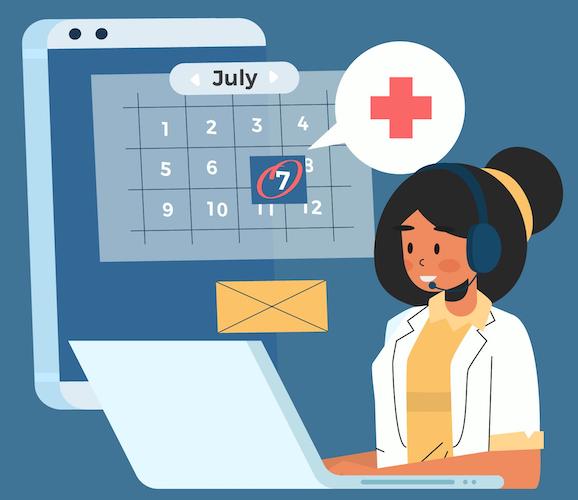
By following these steps, healthcare providers can reduce no-shows and improve the customer experience. With the right strategies in place, healthcare providers can ensure that their patients have a positive and rewarding experience with their appointment scheduling process.
Case Studies of Successful Strategies
Let’s delve into case studies that showcase successful strategies for reducing no-show rates in primary care and outpatient clinics.
Automated reminder system
One example is the efforts of the Mayo Clinic in Jacksonville, FL. Mayo Clinic developed an automated reminder system that sent text messages to patients two days before their appointment. This system reduced the no-show rate in the clinic by almost 50%.
Not-so-automated reminders
Since 2018, the obstetrics and gynecology clinic of Health PEI in Charlottetown has implemented a strategy of calling patients with reminders a day prior to their appointments. This approach has successfully decreased no-shows by around 69%.
However, clinic manager Carol Sellar acknowledges that this method requires significant effort from the clinic staff, as they have to make reminder calls and scramble to fill any canceled slots. Now imagine an AI system with scheduling capabilities that makes phone calls for them.
Using machine learning to predict no-show rates
A pediatric teaching hospital with a 20% no-show rate implemented neural network-based and logistic regression methods to predict whether patients are likely to miss appointments. These techniques correctly identified 83% of no-shows upon scheduling.
The predictive model reduces patient no-shows by tailoring interventions, optimizing reminder frequency, and allocating transportation resources. It also minimizes waiting time, enhancing healthcare efficiency. This ML approach can totally slash no-shows and level up service effectiveness.
Mobile app
Another instance is the Healthy Heart Program in New York City, which introduced a mobile app to track patients’ progress. This approach led to a decrease in missed appointments by approximately 30%.
We strongly recommend you consider doctor-on-demand mobile app development to improve no-show rates in outpatient clinics.
Patient portal
The Kaiser Permanente health system implemented an online platform to allow patients to manage and schedule their appointments. This platform also allowed customers to receive reminders via text message or email. This program resulted in a reduction of no-shows by almost 30%.

These case studies showcase how groundbreaking digital solutions have reduced no-show rates in primary care and among clinical outpatients. By implementing these innovative strategies, healthcare providers can actively engage patients and improve appointment attendance.
Best Practices for Improving Patient Attendance
Let’s review some of the best ways to reduce no-show patients at your business. Here are some tips to keep your patient attendance rates high:
Offer visual timetables
When patients see a visual timetable with clear indications of the doctor’s availability, scheduling appointments becomes a breeze. It’s simple to plan and remember when they can visit, with clearly marked free and occupied slots.
And if you integrate such a visual timetable with the customer’s calendar, you’ll have an even greater chance of reducing no-shows.
Enable voice input
Hospitals and clinics can also use voice input to simplify the appointment-making process, especially when implementing chatbots for scheduling. This feature can help patients save time and reduce no-shows, as it is easier to make appointments and receive reminders using voice commands.
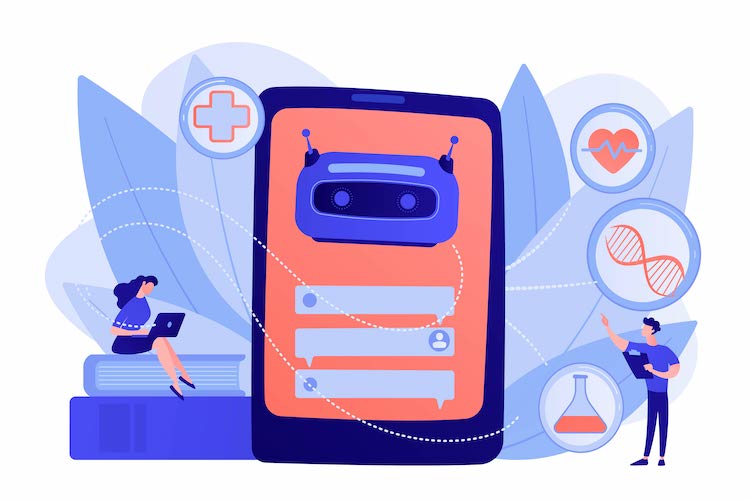
Track location
Some patients may also be willing to share their location from their phone an hour or so before the visit. Location-tracking allows the scheduling system dealing with no-shows to proactively reach out to customers if they’re running late or not on time for the appointment. It also lets the system look for a replacement among nearby customers.
Proactive rescheduling
Healthcare providers can also proactively notify patients open to rescheduling at an earlier date or time. This can help reduce the number of no-shows and ensure that appointments are filled promptly.
Integrate with EHR/EMR
Integrating reminders with an EHR/EMR system can also help maintain data accuracy and keep all appointments in sync. This will further reduce the number of missed appointments and improve the efficacy of healthcare service delivery.
Leveraging iOS and Android to the Fullest
Like with typical on-demand mobile app development, you should also seek to take advantage of the critical built-in mobile OS features. For example, widgets on the lock and home screen can show some value. The same goes for integrations with on-device virtual assistants and custom notification options.
How Topflight Can Help Decrease No-Show Appointments
At Topflight, we have extensive experience developing software that enhances patient engagement and reduces no-show rates for healthcare providers. We truly understand the importance of minimizing missed appointments, which is why we are dedicated to equipping healthcare providers with the necessary tools – highly customizable and tailored to meet each client’s unique goals and requirements. Here’s a short list of projects from our portfolio off the top of my head that features effective patient engagement strategies:
- patient portals
- AI-powered mobile apps with automated reminders and notifications
- chatbots
- doctor-on-demand platforms
Furthermore, our solutions seamlessly integrate with the EHR/EMR system, ensuring data accuracy and synchronizing all appointments.
If you have any questions about reducing no-show appointments or need help implementing such a solution, don’t hesitate to reach out. Let’s revolutionize healthcare together!
[This blog was originally published on July 12, 2023 but has been updated with more recent content]
Frequently Asked Questions
What are some effective strategies to reduce patient no-shows?
Effective strategies include automated appointment reminders, which ensure customers remember their schedules, flexible scheduling options that cater to the varied availability of patients, and reaching out to less tech-savvy customers via traditional communication methods. Other strategies involve allowing easy rescheduling of appointments to accommodate unexpected changes and automating digital check-ins and payments to make the process more efficient and less daunting for customers.
How can patient education contribute to reducing no-shows?
Educating patients about the importance of their appointments can significantly reduce no-show rates. Healthcare providers can offer educational resources to facilitate this understanding, ensuring customers know the value of their appointments for their health and the efficient operation of healthcare services.
What steps should be taken to implement a patient engagement program?
Implementing an engagement program involves a systematic approach. First, define clear and measurable goals for the program. Next, gather data on customer needs and preferences to tailor the program. Develop an AI-driven scheduling system to send personalized reminders and utilize gamification techniques to motivate patients. Implement a CRM system for accurate logging and tracking appointments and regularly evaluate program performance.
Why is it essential to implement a comprehensive patient engagement platform?
Implementing a comprehensive engagement platform is crucial as it streamlines the entire process of scheduling and attending appointments. It motivates patients through gamification techniques, tracks their behavior via a CRM system, and allows for continuous improvement based on regular tracking and evaluation. This results in fewer no-shows and a better overall patient experience.
How can technology help prevent no-show appointments?
Technology can significantly enhance appointment attendance through smart scheduling applications that optimize appointment slots and reduce waiting times. Advanced reminder systems can be set to remind customers at optimal times, while CRM systems offer personalized reminders and provide valuable insights into patient behavior, enabling healthcare providers to tailor their approach.
